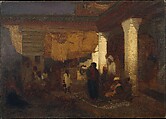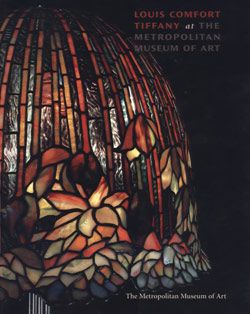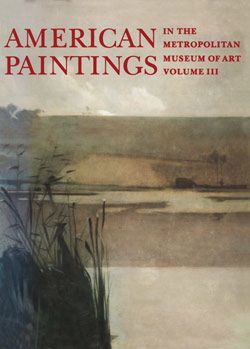Snake Charmer at Tangier, Africa
Louis C. Tiffany American
The appropriation of an exotic subject was typical of European and American painting in the late 1860s and early 1870s. Tiffany's experiences in North Africa with fellow artist R. Swain Gifford (1804–1905) in summer and fall 1870 most likely informed this composition, which resembles closely that of Jean Leon Gerome's "The Snake Charmer" (Sterling and Francine Clark Art Institute, Williamstown, Massachusetts), and both works may have a common source. The picture's rich palette of earth tones recalls the work of his teacher, tonalist painter George Inness (1825–1894), and reveals Tiffany's keen interest in color and light. The painting was exhibited at Snedecor’s Gallery in New York in September 1872 and was later among the orientalist canvases that Tiffany displayed at the 1876 Centennial Exhibition in Philadelphia. It remained in Tiffany's personal collection (later hung at Laurelton Hall) until 1921, when it was donated to the Metropolitan. The canvas also demonstrates Tiffany’s interest in Islamic architecture and decoration. Architectural elements, including the broad white columns and the roofline, would reappear in subsequent decades in buildings he helped design, including Laurelton Hall.
This image cannot be enlarged, viewed at full screen, or downloaded.




